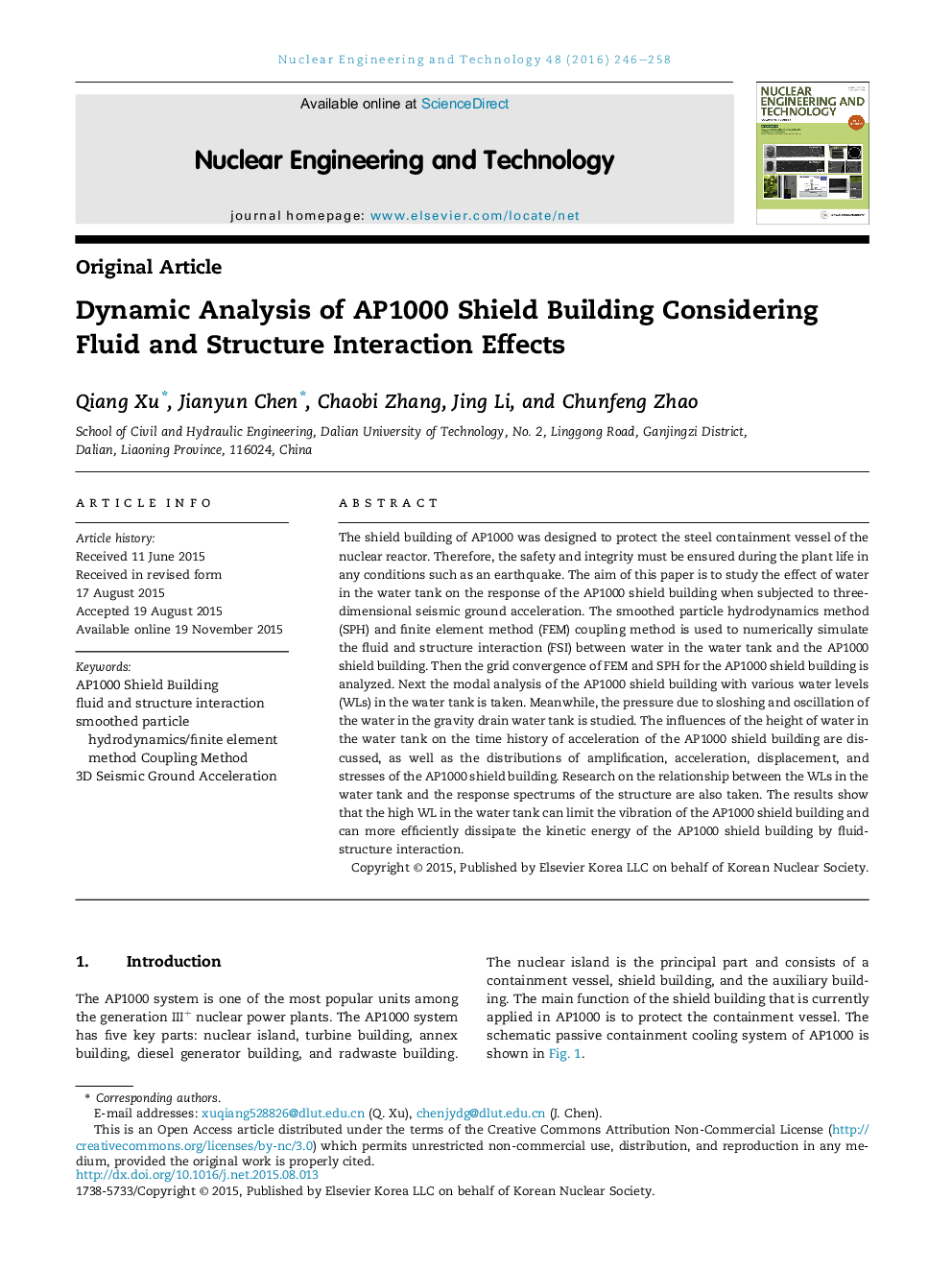| Article ID | Journal | Published Year | Pages | File Type |
|---|---|---|---|---|
| 1740019 | Nuclear Engineering and Technology | 2016 | 13 Pages |
The shield building of AP1000 was designed to protect the steel containment vessel of the nuclear reactor. Therefore, the safety and integrity must be ensured during the plant life in any conditions such as an earthquake. The aim of this paper is to study the effect of water in the water tank on the response of the AP1000 shield building when subjected to three-dimensional seismic ground acceleration. The smoothed particle hydrodynamics method (SPH) and finite element method (FEM) coupling method is used to numerically simulate the fluid and structure interaction (FSI) between water in the water tank and the AP1000 shield building. Then the grid convergence of FEM and SPH for the AP1000 shield building is analyzed. Next the modal analysis of the AP1000 shield building with various water levels (WLs) in the water tank is taken. Meanwhile, the pressure due to sloshing and oscillation of the water in the gravity drain water tank is studied. The influences of the height of water in the water tank on the time history of acceleration of the AP1000 shield building are discussed, as well as the distributions of amplification, acceleration, displacement, and stresses of the AP1000 shield building. Research on the relationship between the WLs in the water tank and the response spectrums of the structure are also taken. The results show that the high WL in the water tank can limit the vibration of the AP1000 shield building and can more efficiently dissipate the kinetic energy of the AP1000 shield building by fluid-structure interaction.
